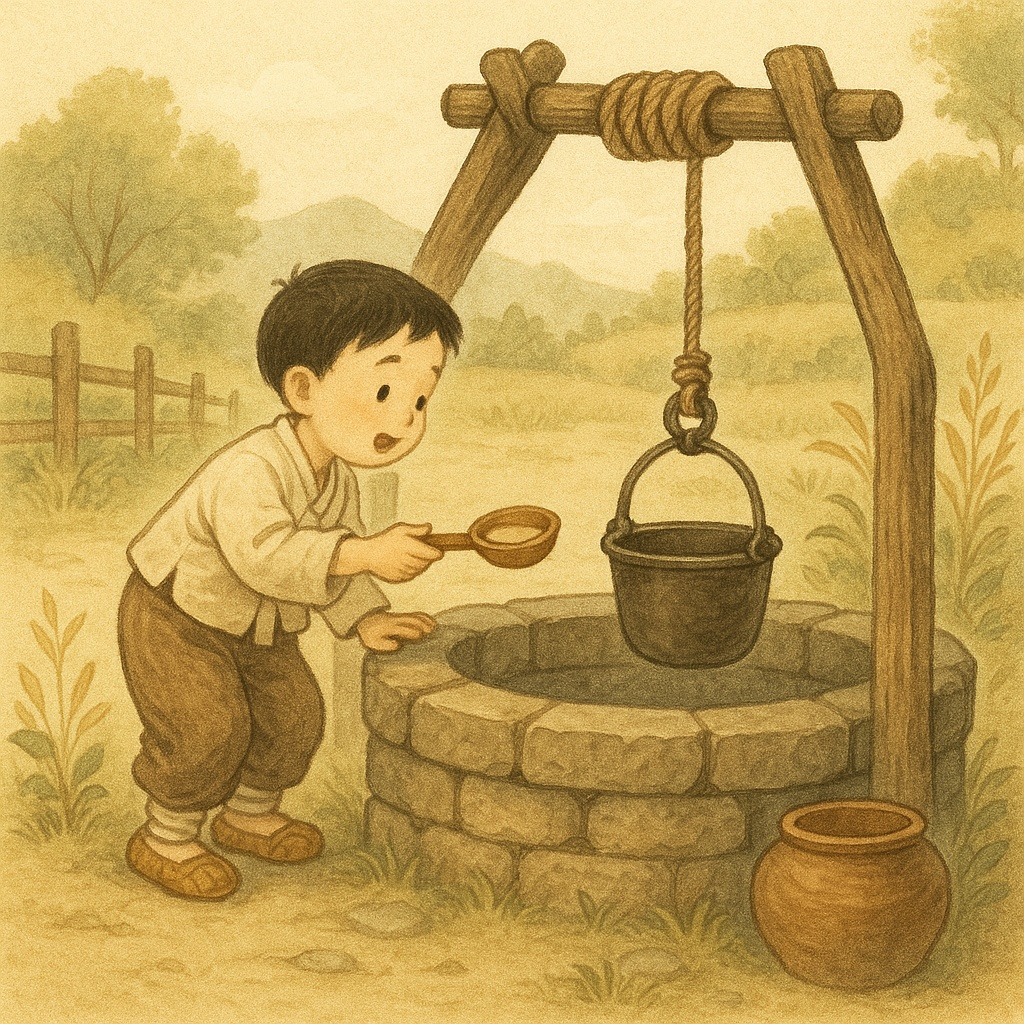Korean Proverb Series 72

Looking for Scorched-Rice Tea at the Well
“우물가에서 숭늉 찾는다”
(Umulga-eseo sungnyung channeunda)
🕰️ 1. The Proverb’s Core Meaning
The Korean proverb “우물가에서 숭늉 찾는다” literally means
“Looking for scorched-rice tea at the well.”
It describes a situation where someone seeks something in a place where it clearly cannot be found —
a mismatch between desire and reality.
Just as scorched-rice tea (숭늉) can only be made from cooked rice,
not from water drawn from a well,
this proverb warns against expecting results in the wrong way or wrong place.
🪄 2. Meaning & Key Lesson
▪️ Don’t look for results where they cannot exist.
▪️ Effort must match the nature of the goal.
▪️ Understanding the situation prevents wasted time.
The lesson is simple but powerful:
use the right method for the right purpose.
Misaligned expectations bring only frustration.
👀 3. Real-Life Applications
▪️ Expecting success without preparation
is like looking for scorched tea at a well.
▪️ Trying to build trust without honesty
cannot produce real relationships.
▪️ Hoping for health without discipline
leads nowhere.
Life becomes easier when we seek outcomes
where they can actually grow.
🌏 4. Similar Proverbs Around the World
▪️ United States — “Barking up the wrong tree.”
→ Going after something in the wrong direction.
▪️ United Kingdom — “You won’t find gold in a coal mine.”
→ Looking in the wrong place.
▪️ China — “缘木求鱼 (Yuán mù qiú yú).”
→ Climbing a tree to look for fish — impossible expectations.
▪️ Japan — “見当違い (Kentō chigai).”
→ Completely missing the point.
Across cultures, the message is the same —
don’t seek answers where they cannot exist.
💬 A Warm Saying
“Look where the truth lives,
and your efforts will finally bear fruit.”
📌 Note
This is a creative cultural content from the Misojieum Story Blog (kor-telling.com).
Please do not copy without permission.
Sharing is welcome with proper source citation.
'Korean Proverbs & World Proverbs' 카테고리의 다른 글
| Korean Proverb : No One Spits in a Smiling Face (0) | 2025.11.17 |
|---|---|
| Korean Proverb : Not Enough to Reach the Liver (0) | 2025.11.16 |
| Korean Proverb : A Protruding Stone Gets Hammered First (0) | 2025.11.16 |
| Korean Proverb : A Pestle Appears Out of Nowhere (0) | 2025.11.14 |
| Korean Proverb : A Living Mouth Won’t Be Webbed by Spiders (0) | 2025.11.14 |
| Korean Proverb : Interpretation Matters More Than the Dream (0) | 2025.11.13 |
| Korean Proverb : You Reap What You Sow (0) | 2025.11.13 |
| Korean Proverb : There’s Always Someone Better (0) | 2025.11.12 |